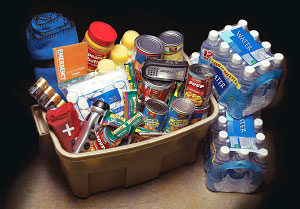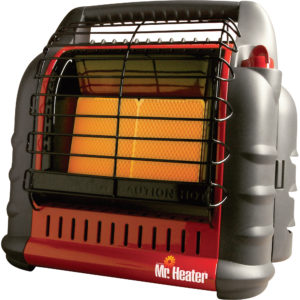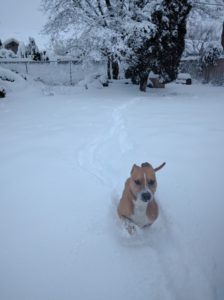
During the month of January, winter has really wreak havoc on us in the Pacific Northwest by dumping over a foot of snow and ice. Were you ready for it? Well, get ready because another one is on its way.
For those of you who are new to the area, prepare for the next winter blast, so you can stay comfy and cozy inside the protection of your well-stocked home. Here is a list to get you prepared for the next storm.
1. Stock Up Your Pantry

- Stock up on non-perishable items that don’t have to be heated to eat. Just in case the electricity goes out.
- Soups, Stews and Chili
- Energy bars
- Canned fruit, tuna and chicken
- Bottled water and juice
- Bagged nuts, dried fruit and trail mix
- Crackers
- Peanut butter
- Cereal — If you don’t like it dry, buy the single-serving cartons of shelf-stable milk that does not need refrigeration. Or, buy powdered milk to mix with water.
- Be sure to have a manual can opener, paper plates, cups and plastic utensils ready if hot wash water isn’t available.
- Trash bags for garbage and bio-waste.
2. Cover Up

Sure, you have sweatshirts and sweaters, but what if the heat is out for several hours or a few days? Do you have enough to keep you warm? Each member of your household should have the following:
- Multiple blankets or a cold-weather sleeping bag
- Gloves or mittens
- Wool socks
- Winter hat and coat
- Insulated layers for top and bottom
- Hand Warmers
- Don’t just keep yourself warm – prevent your house from losing heat. Cover any cracks on windows and doors with winter insulation.
3. Warm Up

You may want to consider a backup heat source just in case your furnace dies on you too. If you have a wood stove or fireplace that’s safe and ready to go, your one of the lucky ones. If not, purchase a portable kerosene or propane heaters designed for indoor use.
- Do not use a heat source designed for outdoors.
- Check your local ordinances for certain bans on heaters for safety reasons, be sure to investigate regulations in your area. If heaters aren’t used properly, they can be dangerous and you could lose your life— carbon monoxide gas can accumulate indoors.
- Initial symptoms of poisoning include headache, dizziness, nausea and general weakness.’
- Keep a fully charged fire extinguisher close by, just in case.
- After you’ve chosen your heat source, the next step is to keep the heat in the room. During an emergency, it’s best to limit yourself to heating one room to make the most of your limited energy supply.
4. Charge Up

In case of a weather emergency, communicating with the outside world is very important. You should have the following near by:
- Duh! A cell phone — Keep it fully charged at all times. If it gets low, charge your phone in the car or use a portable or solar charger.
- A battery-powered clock
- A battery-powered radio or hand crank radio
- Flashlights for everyone in your home
- If you have a landline, make sure you have a corded phone. Cordless phones are less likely to work during a power outage.
- Remember to have a fresh batch of extra batteries in the correct size for each device.
5. Back Up
What if the storm strikes and you’re in your car? Did you stock your car with survival essentials? Don’t forget to pack your car with the following:
- Fill your gas tank. The gas in your tank can freeze if it’s less than half full.
- Flashlight with new batteries
- Cell phone with car charger
- Ice scraper and snow brush
- Emergency flares and matches
- Spare tire or tire repair kit and pump
- Rock salt, sand or kitty litter (the non-clumping) to improve tire traction
- Shovel
- Rope and tow chain
- Blankets or sleeping bag
- Warm clothing — Hats, boots and gloves
- Bottled water and non-perishable foods — Like the ones you’ve stored at home
- First aid kit
6. Don’t forget your fur babies

Your pets can’t prepare for a snowstorm, so you’ll have to do it for them. Set aside the following:
- Extra food — Don’t let the stock go low in case you can’t get to the store.
- Manual can opener — If your pet eats canned food.
- Bottled water — Set some aside for your pets separate from your supply.
- Extra kitty litter — You don’t want you’re housebound cat to poop on your rug for obvious reasons.
- Additional sleeping bag or blanket — Unless you plan to share your bed.
Equip your home for cold weather survival before the next storm. You’ll be glad you did. You will have no need to leave the comforts of your home.
~Afrovivalist
To Prepare = Peace of Mind
Find Your Peace

Afrovivalist: these are great preparations in case of a Pacific NW winter storm. I hadn’t thought of doing a lot of these things. Especially in the car. We live in a slight incline on a major street up to our home. Been dependent on the good souls who come out to help people. Now will have the supplies to maneuver the streets! Do you have any advice on living through earthquakes?